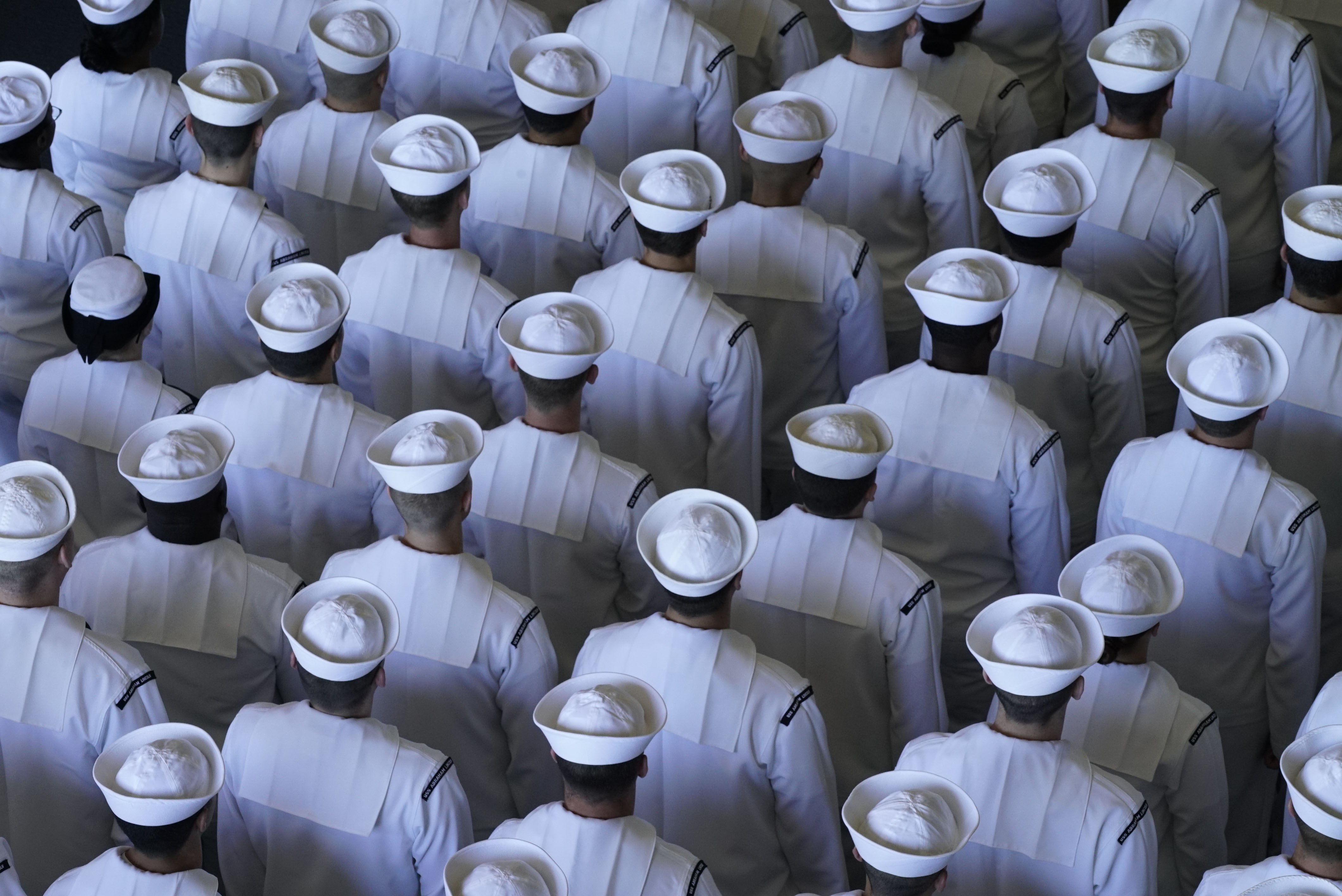
Sailors stand at attention in formation in the hangar bay of the Nimitz-class aircraft carrier USS Abraham Lincoln (CVN-72). US Navy Photo
All the military services face increased recruiting challenges because more than 70 percent of America’s youth do not meet Pentagon standards for enlistment, a member of the House Armed Services Committee said Thursday.
Rep. Don Bacon, (R-Neb.) and a retired Air Force brigadier general, said, “The single most important ingredient to readiness is the constant flow of willing volunteers.” But with 71 percent of the population between 17 to 24 unable to meet the fitness, weight and moral standards requirement, “it’s a red flag for our country.”
That figure of failures remains in place as the services are trying to grow their forces for the future.
Defense Department officials put the size of that target group at 32 million. The Army’s recruiting goal for the coming fiscal year is expected to be about 180,000 for its active force, about the same number as the other services’ total combined.
Speaking at the Heritage Foundation event Thursday, the Army’s highest-ranking recruiter, Maj. Gen. Jeffrey Snow, said, “That’s the lowest pool in a decade.”
The Navy’s goal for Fiscal Year 2017 was 35,200 to meet the projected growth of the fleet. The total is expected to rise to 37,700 when the FY 18 budget is approved.
Ninety percent of all recruits must have a high school diploma; 60 percent must be defined as quality by scoring in the top three categories of the military aptitude tests and less than 4 percent can be in the lowest tier. There are also fitness and weight and moral standards all recruits must meet. The services can and do set standards higher than the Pentagon’s.
Speaking at the Washington an event co-sponsored by Mission: Readiness, Bacon asked, “What happens if we had a national emergency,” requiring the services to draw from the wider pool? “I’m concerned about our reserve structure.”
Bacon said the reasons why so many young people cannot meet recruiting standards is because American “culture slowly changed… and not for the better.”
John Bednarek, with Mission: Readiness and a retired Army lieutenant general, said, “It’s a problem [finding qualified recruits and youth interested in the armed forces] is a getting worse. They’re not eligible to join the military if they wanted to.
“For 80 percent [of American high school students] there is no requirement for physical fitness [instruction] for graduation.” In the lower grades where recess is required, there often are no structured physical fitness programs, he added.
Bednarek and Bacon also pointed to the need to improve basic education in reading and mathematics in elementary schools and put renewed emphasis on teaching citizenship, steps that would benefit not only the armed forces but also the nation as a whole.
Using the oath that recruits take upon enlistment, Bacon said, “Many of our youth don’t know the Constitution” and 27 percent of high school students could not identify a single right under it.
The challenges also range from the prescribed use of anti-depressants to treat youth with mental health concerns to a strong civilian economy, with unemployment rates running at about 4.5 percent.
Bacon said youth and their families often have a skewed picture of the military from television and film, thinking of it solely in combat terms. Snow and others noted only seven percent of the United States’ population are veterans and the armed forces, for the most part, are not stationed in large metropolitan areas so there is little interaction with civilians.
